The first big climb of the 2019 Giro d’Italia, the climb to Montoso features on Stage 12 from Cuneo to Pinerolo so here’s a closer look. It’s a brute and a lesson to study the route more closely, but also a road to nowhere, or perhaps to the past and Italy’s better days.
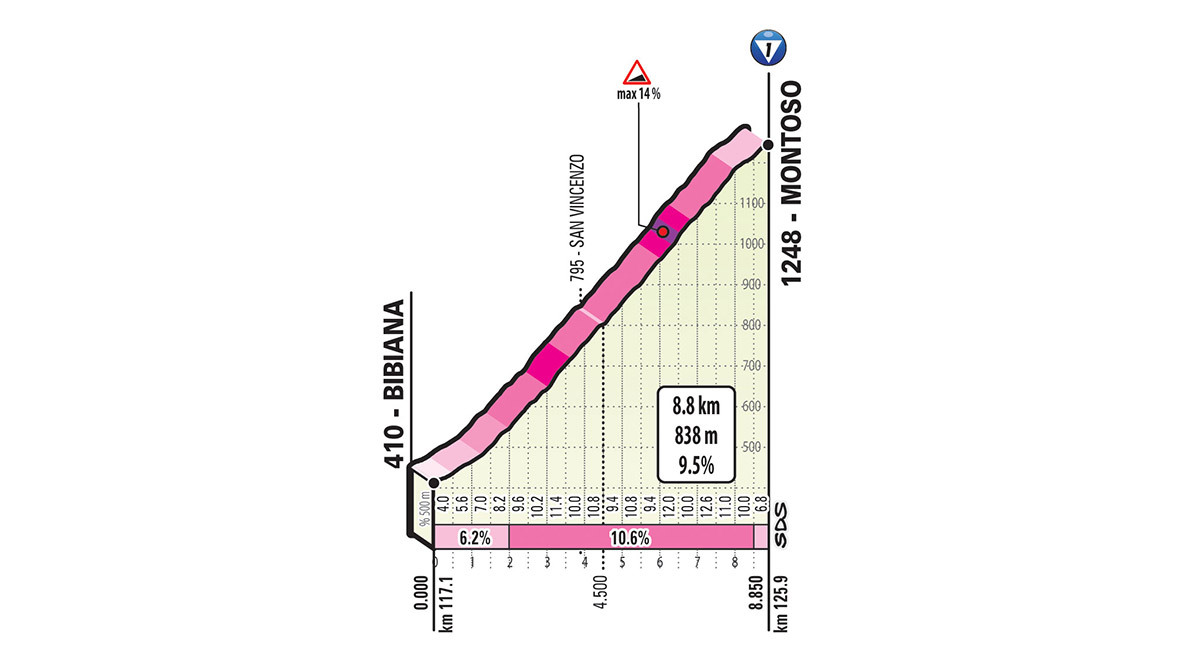
The Route: the Via San Vincenzo heads west out of Bibiana, a town in the Province of Turin in north-western Italy. It is 8.8km long with an average gradient of 9.5% and with a gentle start and a flat finish this means the main part of the climb is consistently over 10%.
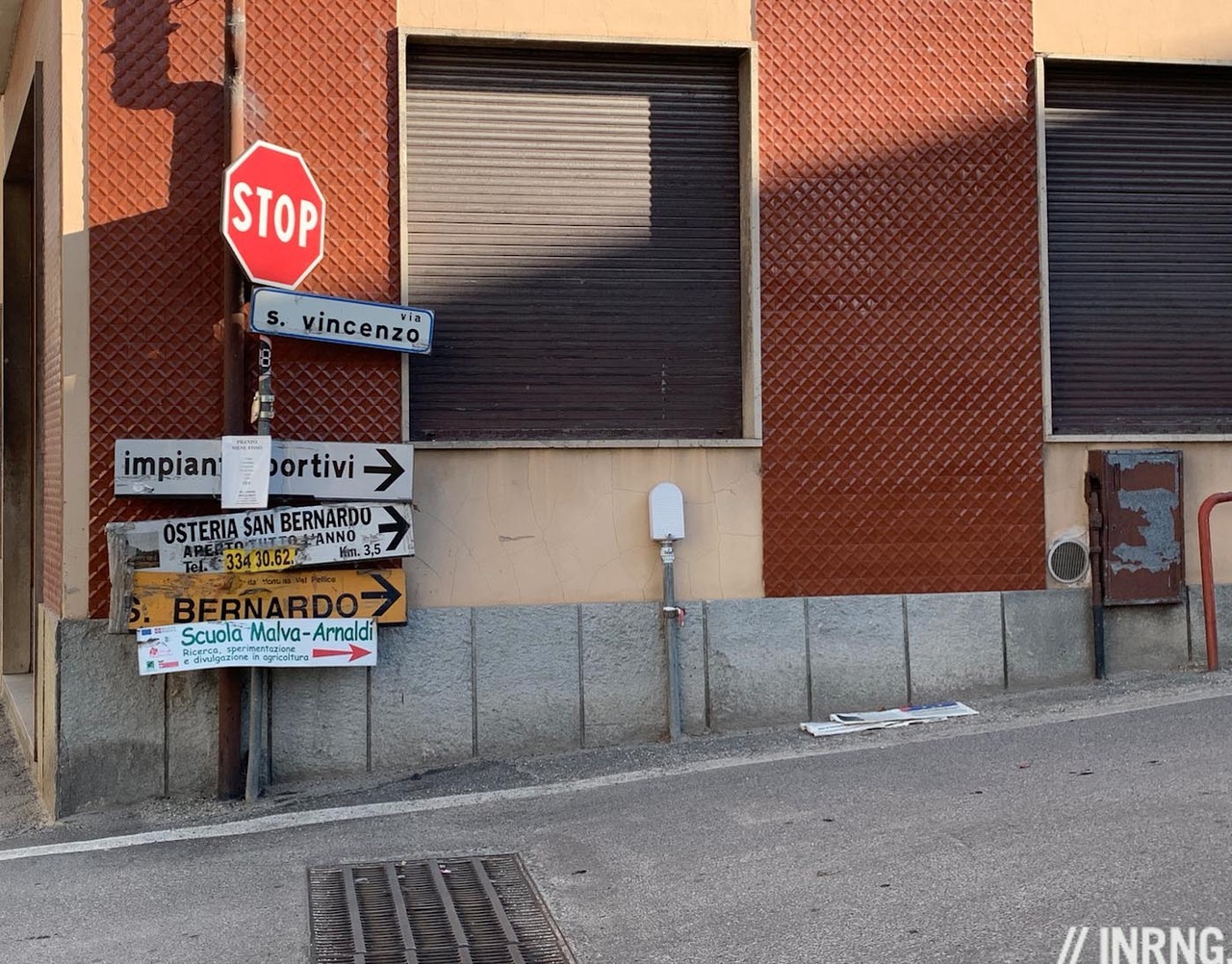
The Feel: the region here is Piemonte, literally the “foot of the mountain” and this climb is a toe as it starts from where the giant flat plains of northern Italy first meet the Alps. As you turn your back on the town of Bibiana you can see the wooded mountains ahead and poking over the treeline two giant Alpine peaks sit like white pyramids. But for all the allure of leaving the plains behind it’s an unpromising start, the Via San Vincenzo feels ordinary, a big wide road with a mix of houses, light industry, supply yards as well as a “sports bar” and a kiwi orchard. This is supposed to be a hard climb but it’s not climbing that much. Which is nice until you realise that every easy turn of the pedals means the road to ahead has to be steeper to make up the average. After two kilometres the road enters the forest and from here on it pitches up through chestnut woodland and the gradient rarely dips below 10%, if you can find 20 metres at 8% then it only means you’ve got 200 metres at 12% next or more. The road surface varies, the Giro is coming and so one minute there’s a section of fresh blacktop, the next it’s the cracked road and then sometimes one half of the road is old and one side new. There’s little traffic – one car during the whole ascent on a weekday afternoon, more about this later – so you can cross to the smooth side if you keep your eyes and ears open. And you’ll want to because the slope bites and every bit helps.
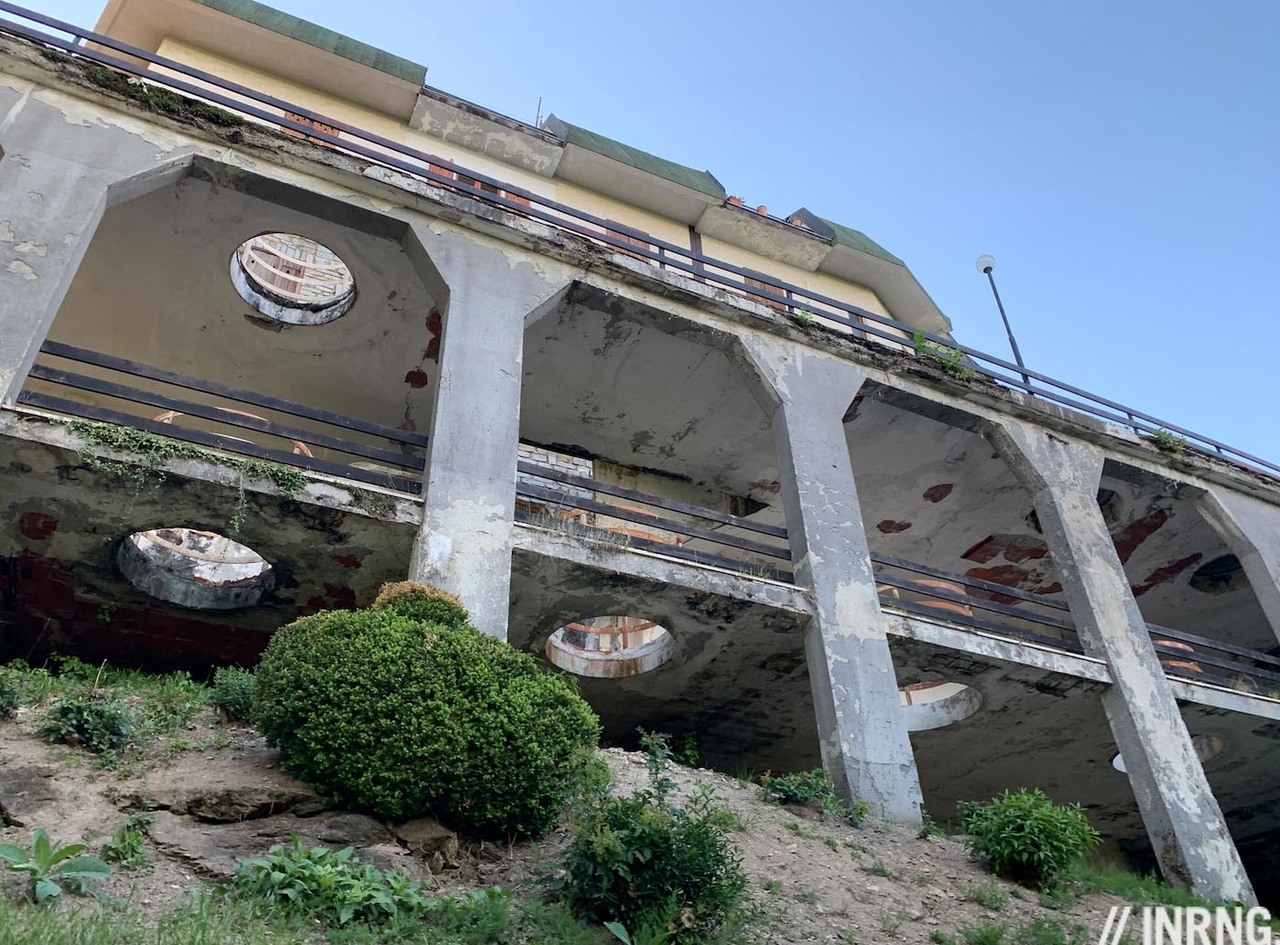
After four kilometres you pass two giant buildings hiding in the woodland, they’re large apartment blocks, each with their own style, only the first is dilapidated and the second heading that way and they look abandoned. Around the corner a house is for sale. Onwards and its more woodland and sometimes you can see through the trees to view a mosaic of green fields and red brick buildings on the plains below. Then on your right is the San Vincenzo shrine for Vincent Ferrer. Soon the road begins twists with hairpin bends, these are steep and irregular and serve to make things harder still, at times you feel like a mountainbiker as the front wheel wants to lift up as you scale the 14% parts. The final section sees the road leveling out and you arrive in Montoso itself.
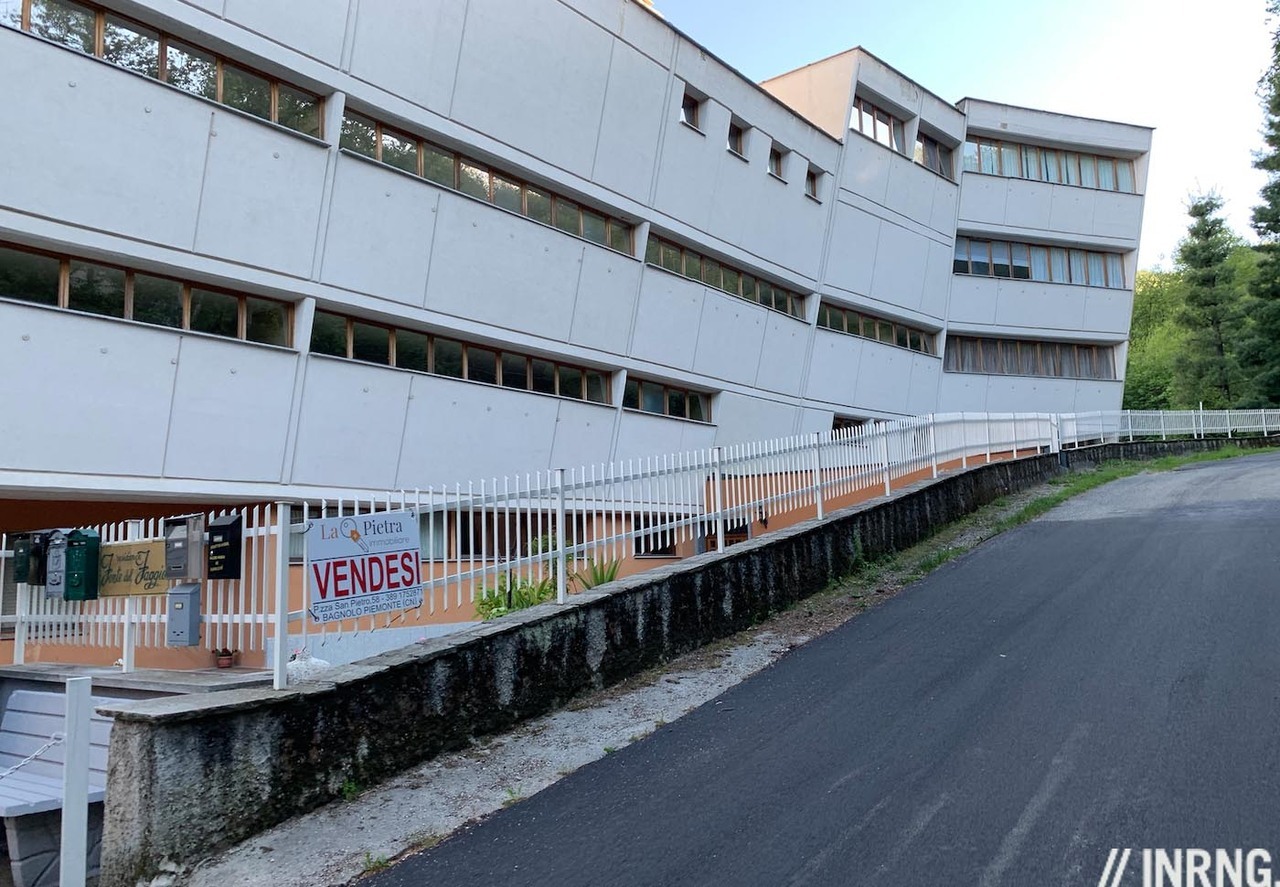
Montoso might be perched at 1,250m above sea level but it vibes flat. Almost every building looked empty, the shutters closed. It could be an out of season visit but the emptiness felt more enduring. Some apartment blocks were encircled with temporary fencing and the place had plenty of signs saying Vendesi or “for sale”, only the large number of signs and the faded nature of many of these them suggests it’s not a thriving market. It’s as if they built it and nobody came, or at least nobody comes these days. It’s a mountain resort but you have to higher up to Rucas for the skiing and there you only get six kilometres of skiing with the longest run just 1.5km and it’s all between 1,400m and 1,800m meaning the snow isn’t reliable. The whole place feels abandoned and a reminder that it can be easy to fetishise Bella Italia for those who come and leave in the space of three weeks every May: yes the coffee is good, but for those who live there it’s not all wine and maglie rose as the country, especially the countryside, is beset with unemployment, an economy in the doldrums and political challenges.
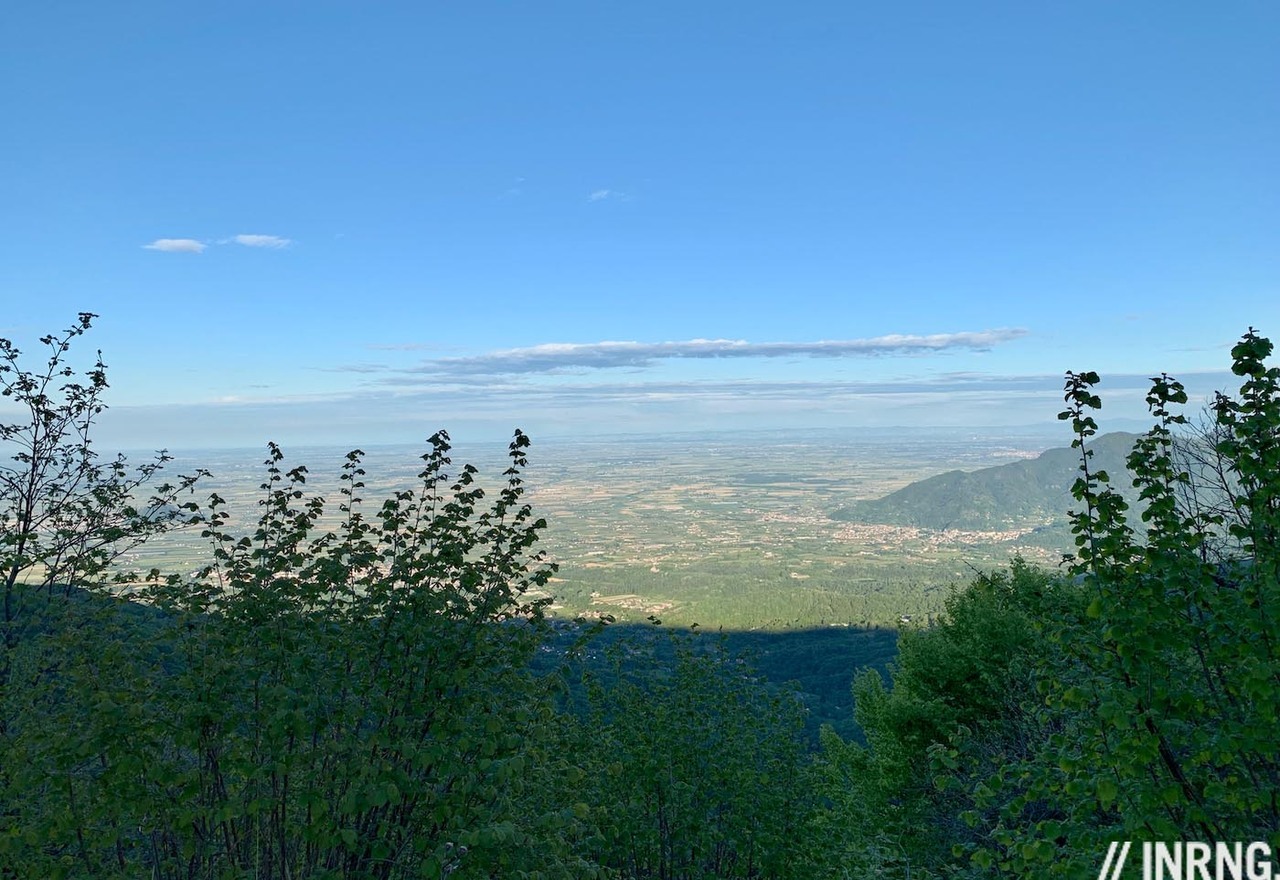
The descent is the reward. If the way up was steep and irregular and on a rough road, the other way down to Bagnolo is a high speed toboggan run with big views, fresh tarmac, wide sweeping bends. You can easily reach 80km/h or more and yet it never feels unsafe, partly because the deserted town means few people are driving up the other way.
The Verdict: a hard climb, a lesson to pay attention when route planning because at a glance 8km at 8% sounds hard but nothing wild, only look closely as 6km of 10-15% means you need low gearing. It’s not famous, it’s not glamorous but it does have a peaceful feel. The top in Montoso feels melancholic, a place that has seen better days but if you want to get out quick the descent is brilliant fun.
History: there’s no obvious sporting history as Giro visits for the first time and the hard climb ought to thin the field on a stage from Cuneo to Pinerolo although it’s too far from the finish to see big moves. Instead the mountain has a place in Italian history as a place of refuge and activity for resistance during the Second World War and you can quickly see why, the thick woodland provides cover and allowed people to vanish into the mountains to escape the fascists.
Travel and Access: Turin is the nearest big city with major road and rail links and Milan has the closest international airports. Nobody would travel for this climb but nearby Pinerolo is a large town and the area around it makes a great base for riding in the Alps as you can have the Colle del Nivolet to the northwest and the Colle di Fauniera to the southwest and if hard to find better climbs in Europe.
More roads to ride at inrng.com/roads


“The whole place feels abandoned and a reminder that it can be easy to fetishise Bella Italia for those who come and leave in the space of three weeks every May: yes the coffee is good, but for those who live there it’s not all wine and maglie rose as the country, especially the countryside, is beset with unemployment, an economy in the doldrums and political challenges.”
So true, sadly!
Another sort of impressions which come much stronger when you’re riding your a bike instead of traveling in a car.
Thanks for the great read.
“… beset with unemployment, an economy in the doldrums and political challenges.”
Sadly, all true. As one of my bike industry friends (who runs his business in the USA) always tells me: “Yes, if I was semi-retired like you with nothing to do but ride my bike and drink wine each day, I’d move back to my home in Italy in a heartbeat! But I have to make a living!” So he’s like I was for most of my life – a guy who lived in a place he hated with a culture he didn’t much understand, just for economic reasons. But that’s over now and as long as the authorities allow, I’ll be somewhere in La Bella Italia!
I feel the pain! came to the US 50 yrs ago as a 12 yr old and I miss my Bella Italia! Some day soon, I shall return!
I don’t know specifically about Montoso, but I’m not sure those were the looks of Italy’s *better days*.
Ill-founded real-estate speculation in rural or mountain area around poorly planned ski stations (once again, essentially for speculation’s sake, tangenti, accomplice local banks and so on). Much of what Italy is suffering now is indeed the direct consequence of the last couple of decades (or five. Or ten). It was already there, but it simply didn’t make the news or looked like folklore (for instance, Consonno, sometimes hinted at as a way to spice up the disappointing Lombardia’s Lecco finale).
OTOH, Piemonte’s unemployment rate, as in most Northern Italy, isn’t that bad, in spite of everything. Say, not much different from the happiest regions in France.
Italy’s always been a country of great differences. A place like Montoso isn’t the sign that things aren’t working anymore: it’s the result of applying – back “then” – a model or a mentality which made Italy *work* somewhere else in a place where it didn’t make sense. Nor then nor now.
Surely, Montoso would look and feel better, probably from a monetary POV, too, if nothing of the above was ever built. The mistake simply became apparent.
Finally, and as a separate theme, I recently helped some friends to plan a bike route in French, more or less following the Haute Route Alps concept. I guess those ski stations work great, given the money they’ve got to pay for Tour stages. Yet, when planning the route, I struggled to find roads which weren’t terribly marred by the well-known-to-cycling-fans high altitude architecture. Does that really make sense? I suppose that the answer is ‘yes’, and yet I’ve lost most interest to ride my bike there myself – which is very personal and doesn’t mean anything at all, but left me wondering about the whole affair of mountain economy (and ecology).
A good point, these buildings aren’t the result of today’s problems but more a long term slide and perhaps why they were ever built in the first place is a good question. It’s not unique to Italy, there are crumbling ski stations in other places – Mourtis at the top of the Col de Menté was on the Tour de France route last summer is packed with “A Vendre” signs. But it’s a reminder that it’s not all “grande belleza”.
As to “playing in the snow” real estate in general, isn’t it all at risk as the snow stops falling at lower elevations no matter what country it’s in? Italy may be in somewhat worse shape than other European countries, but for me (especially since I’m semi-retired) that’s offset by all the great things that they still have…and protect with origin-of-production controls and UNESCO World Heritage designations. They have a terrible government at present, but who can boast of a great one at the moment? I think Italy’s current combination of Fascists + morons will be short-lived anyway 🙂
At any rate, the current Government is just the latest by-product of the anthropological shift which started back then in the 80s and which was fostered by most economic powers (legal and less legal ones), all of them eager to debilitate from its roots one of the strongest set of communist party and labour unions of the Western world. Since Portella della Ginestra, “the story’s always the same”.
Personalisation of politics; self-credited genuine and supposedly inmediate contact with *the people*; disregard towards *the experts* in any field; identitary narrative prevailing over debate or dialogue; refusal of traditional “structured” ideologies; trading away discourse for spectacle; claims of being pragmatic (whereas it’s just cynicism at best) and at the same time being utterly ineffective. All with a resounding soundtrack of redemptive mythology. Is it Trump? Is it Brexit? Is it Cinque Stelle and Salvini?
Yeah, but it’s just Matteo Renzi all over again, and Berlusconi before him.
That’s how a very solid social State and an even more solid system of cultural production and dissemination could be pretty much dismantled in half a generation.
I guess that nobody among the decision-makers really asked themselves if it was better to stay “just” overly rich in a context of (very relative) common prosperity, or to try to become insanely rich and privileged albeit surrounded by misery and ruins. If I was rich and powerful, I’d sure prefer the former, and that’s probably why I’m not! And they probably were afraid of losing everything if they went on sharing something.
(The paradox is that, regarding some very specific issues, the current government, or part of it, sometimes happens – stress on *happens* – to do better than the various “civilised” guys who held the power one after another through the previous ten years or so).
Of course. And, more and more often, I find myself wondering if the “piccole bellezze” (inevitably plural) are what is going to actually survive in/of Italy, rather than the way too exposed Grande Bellezza. That’s also why they’re more worth protecting, trying not to give them away in return for cheap concrete and glimpses of gold (“non è tutto oro…”).
And, to prevent the typical question: “what else if not apartment buildings and ski stations?”, let me point at the smallest road sign you can see in the second photo above:
http://www.scuolamalva.it/
The “impianti sportivi” are often closed or soon closing, this has been going on for the last 20 years (though its history is way older).
Or, somewhere else in the depressed rural mountain area of the forgotten Italy, you can find something like this “Biblio-osteria”:
https://www.caberizzi.it/
…or a Baita & Breakfast:
http://www.ecomuseovaltaleggio.it/stazioni/baita-breakfast
(Disclaimer: I happen to know these latter examples which came to my mind because I’m from the area, but I’ve no personal ties with either)
Some interesting reading around WWII in the area; the two Battles of the Alps, US bombing of Turin and Communist-inspired workers strikes in its factories.
See L’Ultima Battaglia delle Alpi –
https://m.youtube.com/watch?v=g0n5xMxyqkU
I watched the Tuscan stages with some interest as we go to the area around Montespertoli and Certaldo most summers. What I have noticed is how much cleaner, tidier and (to put it bluntly) richer the Tuscan towns and countryside look than much of the rest of the country. We have seen a huge difference from our first visits nearly 30 years ago. The down side is that it can feel a little like a version of Disneyland for middle class northern Europeans but no doubt the local economy has benefited.
For other parts of the country without the attractions of “Toskana” to bring in wealthy tourists there seem to be many challenges. Personally I would say the issues go back to the founding of the modern Italian state, where a “country” and language were created when in reality neither had any existence outside the imagination of various nationalistic “intellectuals”. However this is a subject far removed from a blog (and a very good one at that) about bike racing. Sport is as good a way as any to tune out for at least a short time from the political challenges facing us all.
Hi, I have never been to Tuscany except for the seaside near by Grosseto. Anyway I guess that it really depends from place to place. I mean that I live in Piedmont and in a relatively small territory you can find absolute gems like Langhe, Valle Maira, Monviso Valley (and many more) but you can also find degraded areas like the outskirts of Turin which were hit by the economic crisis.
And I have named places not even from an entire region (Piedmont) but from two provinces (Cuneo and Turin).
Of course towns in Tuscany which have plenty of historical buildings, wonderful hilly landscapes, great wines and so on will be able to attract tourists quite easily (and the same holds for regions like Trentino Alto Adige that invests a lot of money into tourism promotion). In Piedmont instead we do not invest so much in tourism promotion except for a few places like Langhe and Lago Maggiore but this is not necessarily a drawback because this also means that when you discover the almost unknown gems of Piedmont (mountains in particular) you can enjoy them fully without being worried about hordes of other tourists.
Hi, I am a cyclist from Bagnolo so Montoso is my “home climb” since it starts 200 meters away from my house. I really appriciated your report, I’d like to point out some facts about the places you mentioned.
First of all the climb from Bibiana is a secondary road to Montoso, which is closed during winter, in fact the main road is the one from Bagnolo (this road is always open). Montoso is not the end of the climb, you can go on for other 5 kilometers more or less until you reach Rucas (altitude 1500 meters) where there’s a small ski station with 3 slopes always very crowded during the weekends in winter if there’s enough snow because it is a very cheap ski resort and is perfect for beginners and children.
In Rucas there are also 3 enormous buildings (built in the 60’s or 70’s) which are the symbol of how Montoso and Rucas were supposed to kick-off as tourist attraction…and they did for a while back in the days but then they basically collapsed in terms of tourist business.
So now we have 3 enormous buildings in Rucas and many other buildings in Montoso which are old and very ugly but they still have owners so you can’t simply demolish them because they do not look good. Moreover many of the buildings, houses and apartments that you see in Montoso are owned by people who live in Turin or near by Turin so you can easily imagine that for someone used to live in a city even Montoso will be ok (of course it’s not as beautiful as other places but when the weather is good even Montoso is not bad with respect to the outskirts of Turin). So basically many cheap apartments and buildings were built in the 60’s and 70’s in order to sell them to (not rich) people from big industrial cities…add to this the fact that there was not any law to regulate the aesthetic impact of buildings in mountain areas and there you have it: Montoso.
The main activity in the area is the extraction of a special kind of stone named “Pietra di Luserna” so there are many quarries (most of them in the territory of Bagnolo, a few of them in the territory of Luserna) and probably you will see them on the TV thanks to the helicopters (hopefully the weather will be good enough for elicopters to fly).
Stone quarries mean quite a lot of heavy traffic on the main road from Montoso (Rucas in particular) and Bagnolo, in fact the road was in very poor conditions before the new tarmac layer was added a few weeks ago (the road has not been in this wonderful condition for at leas 20 years but probably even 30). Unfortunately since the Giro won’t reach Rucas the road from Montoso to Rucas is still a nightmare and I recommend to ride it only with a mountain bike.
I have ridden Montoso from Bagnolo’s side at least 50 times and from Bibiana at least 10 times, I think it would have been more spectacular to climb Montoso from Bagnolo because when it’s sunny and hot it is more challenging than the side from Bibiana (otherwise I consider them equal but from Bibiana there are a few sections to recover, from Bagnolo you can’t almost never recover and you also have a 700-800 meters section at 1.8km to go constantly at 13-14-15%). Anyway I understand that the descent to Bibiana would have been way too dangerous for the riders, extremely technical.
Finally the two white giants you mentioned are called Rumella (or Ostanetta) and Frioland…behind them there’s the way more famous Monviso (not visible because we are too close to the two mountains mentioned earlier).
Thanks for sharing and adding extra info. I hope you enjoy the Giro passing so close to home, they’ll fly past.
I will be in Montoso a couple of kilometers before the top of the climb, so I will enjoy the race from a privileged point of view. Of course the descent will be very fast, I’m curious to see the timings both for the climb and for the descent.